Organizations must respond to shifting demands and trends with agility to deliver business value across new channels and ways. API is a critical building block in modern product development. What are the nuances involved in the API-First approach? Read on to get answers to common questions such as what it means to be API-First, what benefits this path gives, and what the best practices are for API-First development to support new product development or app modernization efforts.
To enable scalability, agility, and growth, organizations are reimagining, re-architecting, and replacing legacy systems with modern products that are cloud-native development, rely on the flexibility of and scalability of microservice architecture, and are connected by APIs to meet business objectives. These products are said to be API-First – they are a foundational part of the product design or app modernization efforts. API accounts for 51% of development effort, and API-First leaders excel, developing faster with fewer failures.
What is API-First?
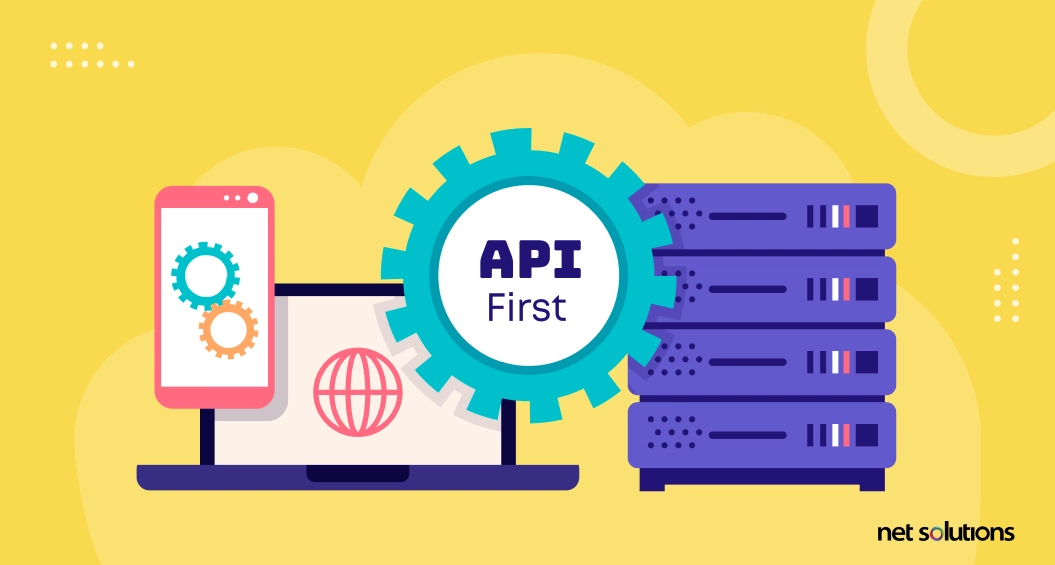
Before defining API-First, let’s step back and define what API means.
An API stands for Application Programming Interface, a kind of software with a distinct function: allowing two or more systems to communicate across a two-way connection or bridge.
APIs are powerful tools because they simplify programming through abstraction, only exposing what the developer needs and allowing organizations to tap into and connect systems and services to increase value. The API is key to the modular programming required to support today’s development projects and business needs.
To answer “What is API first?” let’s look at the API’s evolution. In a legacy software environment, software was built then an API would be added to allow access to some part of the system to support integration or automation. In an API-First strategy, the API is not an afterthought – it is the foundation of how the product is developed, allowing all product functionality to become accessible through API(s), highlighting the critical role that APIs play in making everything happen. Everything is designed to share and communicate.
The concept of API-First not only applies to how the product is designed and how its parts communicate with each other but also to how these products are consumed as a part of today’s modular economy – a concept that Jeff Bezos reflected in a 2002 memo in designing all Amazon services to be “externalizable.” Where this value has been internalized, you can also hear the term “API-First business” applied.
Is API-First the Same As API Design-first?
API-First development implies that the business treats APIs as very important. These are taken as key business assets which help an organization operate. API-First is about putting APIs in the front and center, and API design-first is about creating the API itself.
API design-first means that you iteratively describe every API design. The description is such that both humans and computers can understand it. Every working team speaks the same language, and every tool they use will leverage the same API design.
Teams put in a lot of time in the design phase to ensure that the code written doesn’t have to be scrapped or written again. The API design-first process starts with all stakeholders participating early in the API design phase. The API contract written thus satisfies everyone and ensures that both humans & machines understand the finished product.
Key Concepts in API-First Architecture
What does it mean to be API-First? The API-First approach is characterized by the following:
- The API is not an after-thought; it’s a foundational part of the product design
- The API is carefully designed and maintained
- The API-First approach is designed for reusability
- Every API design leverages the same standards
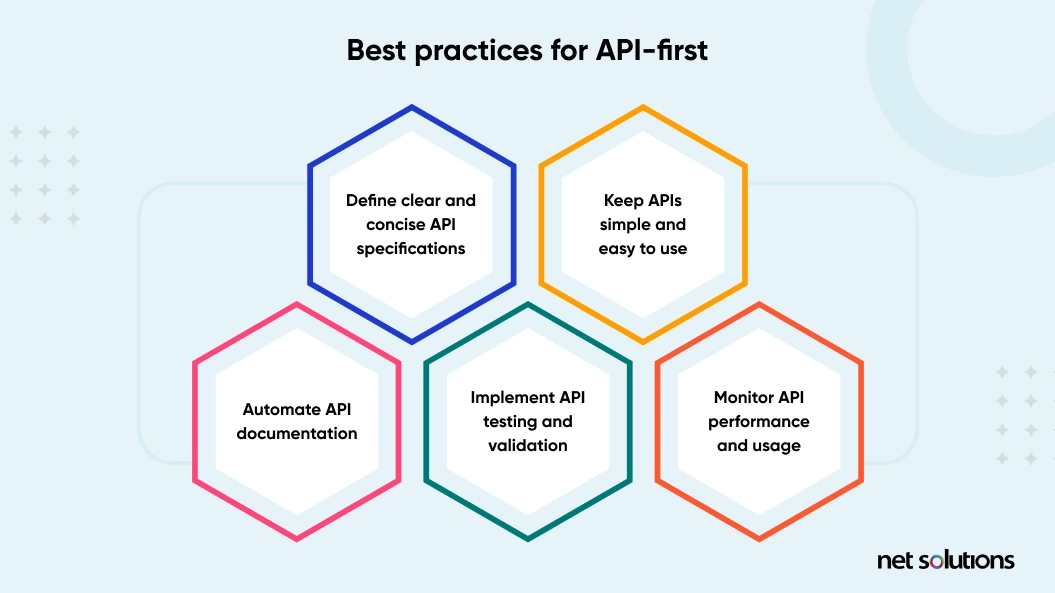
Examples of API-First Architecture
What is API-First architecture? API-First examples include MACH architecture, which defines this flexibility and scalability with four parts: a reliance on Microservices, an API-First design, a Cloud-native execution, and a Headless configuration. This same approach is also a part of the composable architecture, which is based upon MACH and focuses on modularity and a lens of continuous adjustment.
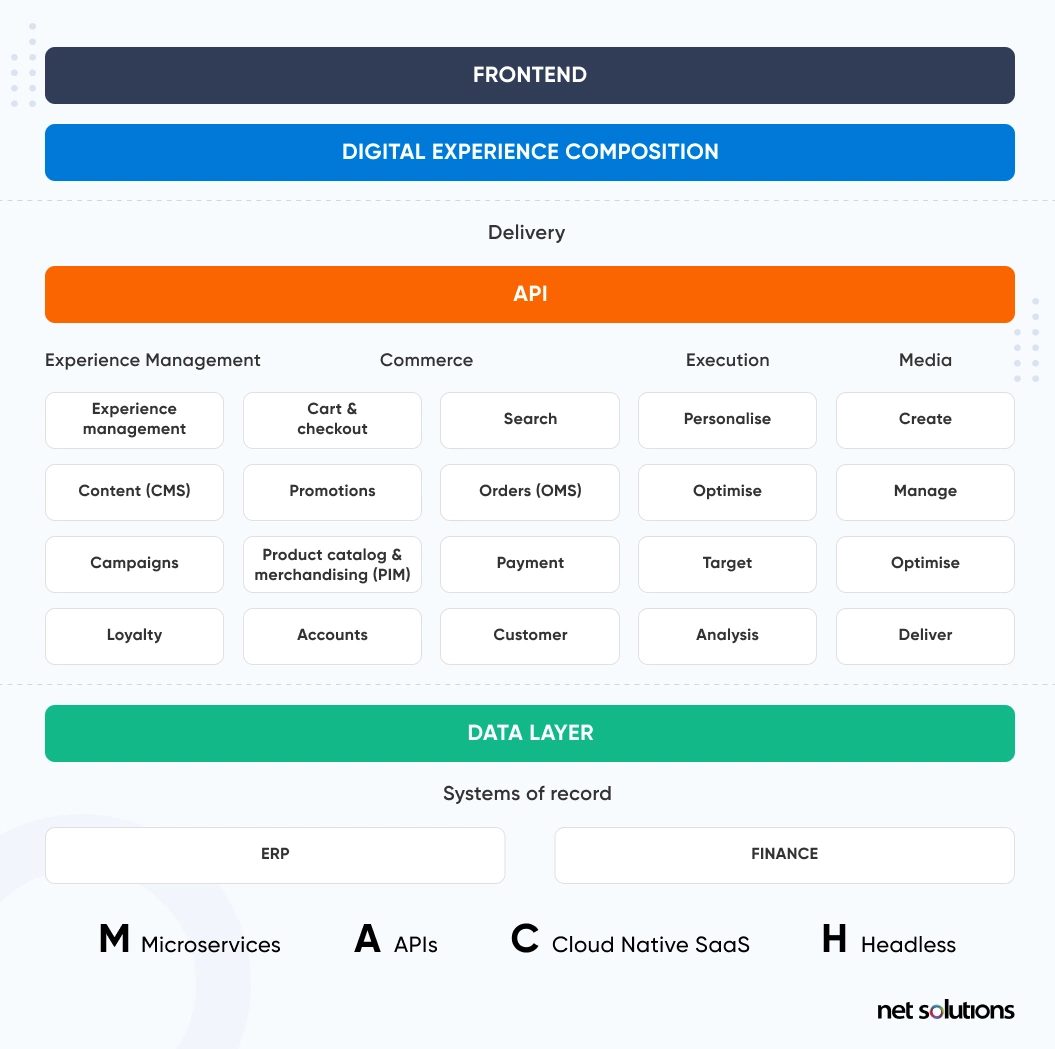
API-First products are everywhere. Instacart APIs make it possible to add Instacart capabilities to eCommerce sites. Google also considers itself API-First, making it easier for organizations to connect their applications via the Apigee API management platform. Other prominent players in the API economy are Salesforce, Twilio, Stripe, and Facebook.
Benefits of API-First
The API-First approach is growing in popularity. The API is an independent product, and these API(s) are central to the functionality of the app or system being designed.
The main drivers are digital transformation, a shift from monolithic software design to microservices, and the increasing use of connected devices (smartphones, tablets) and online retail channels (website, app, social). With an API-First approach to product design, organizations have a greater capacity to scale, focus on user experience, and innovate to meet changing demand.
Let’s look at the specific benefits of API-First development:-
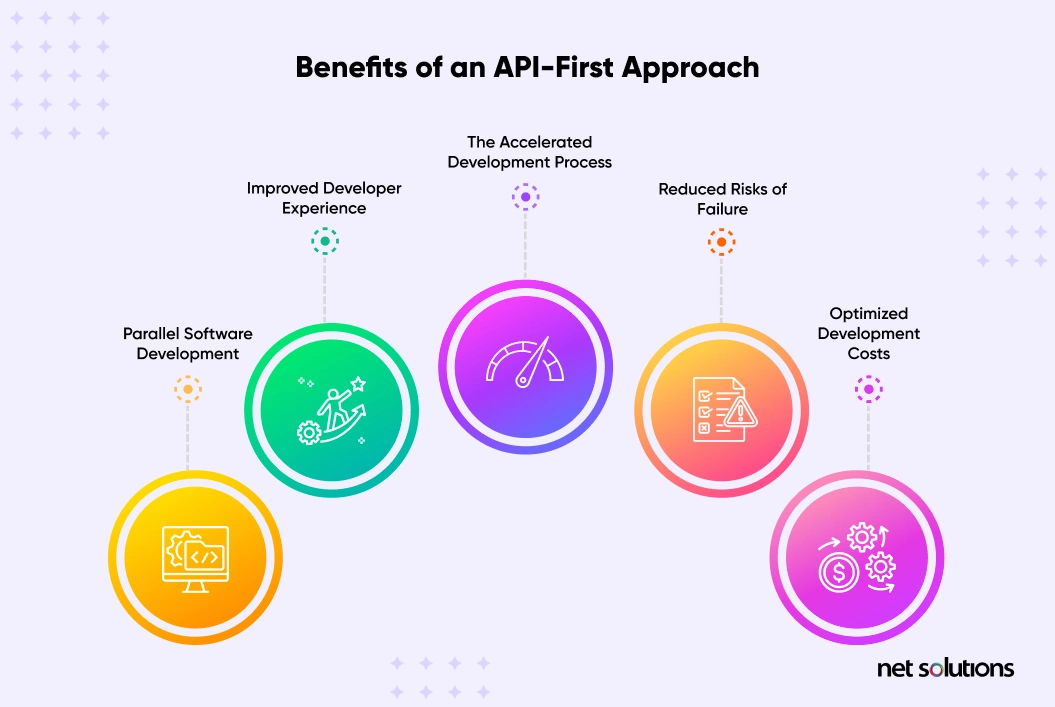
- Improved developer experience The API-First approach thinks about design and documentation before coding begins, making it easier to develop APIs and ensuring the code is easily consumable in the final product by other developers. Further, this approach supports the parallel development of APIs and modular products.
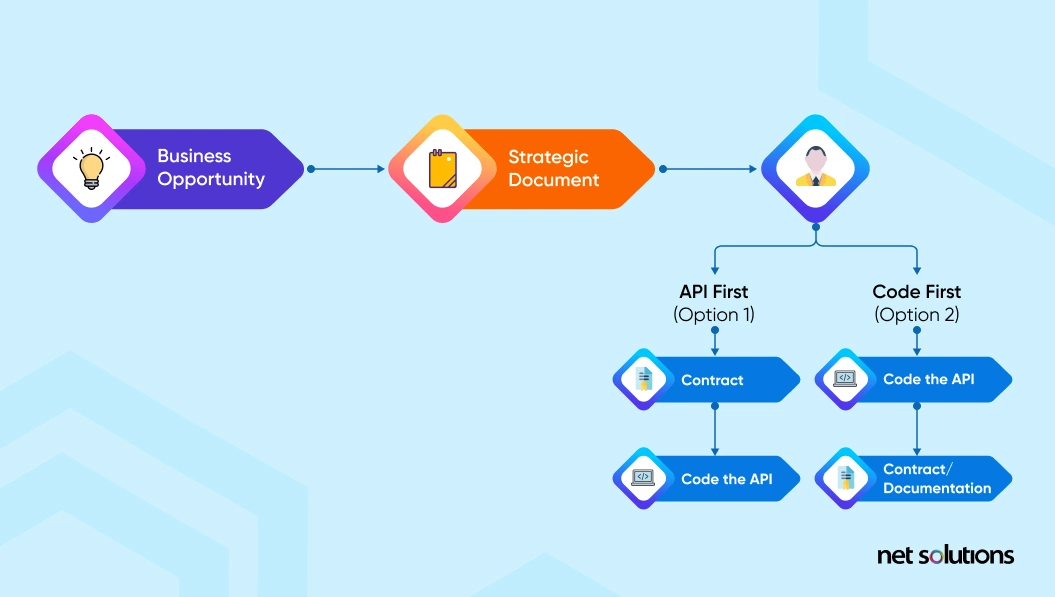
- Better collaboration between teams An API-First product requires that stakeholders work together to create an API design that makes sense for both the business and makes sense to the humans and machines who will use the APIs. This API contract (how the API is supposed to behave) requires more upfront time in the design phase, often helping align efforts across teams because everyone is on the same page.
- Faster time to market The API-First approach allows teams to work in parallel, reuse components and APIs, and use many powerful API tools (e.g. SwaggerHub) to build the APIs themselves, helping teams adhere to a consistent design standard supported by automation and error feedback. The net result of all of these benefits is increased time to market.
- Increased flexibility API-First development creates reusable and standardized APIs, allowing for the integration of various services, regardless of their eCommerce platform or language. Further, API-First design reduces dependencies, allowing both works to progress in parallel and products to evolve quickly.
- Improved security With the API-First approach, security can be baked into the API design – not just bolted onto the product after – helping ensure security is met early in the product development process.
Challenges of API-First
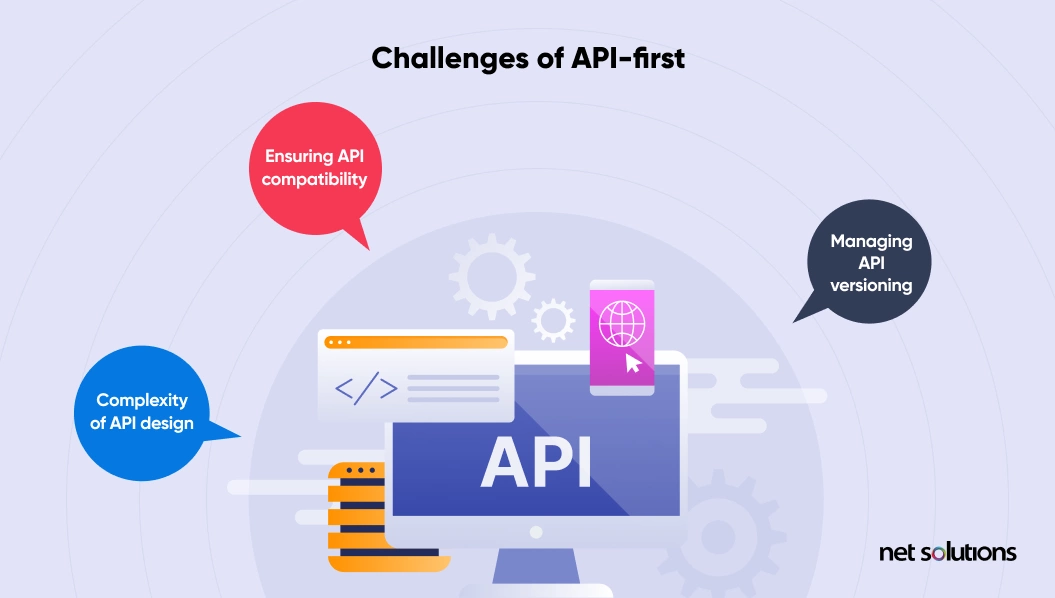
When adopting an API-First strategy requires a shift in mindset for organizations and can bring other challenges:
- The complexity of API design The API-First approach thinks about design and documentation before coding begins, making it easier to develop APIs and ensuring the code is easily consumable in the final product by other developers. Further, this approach supports the parallel development of APIs and modular products.

- Continuous Delivery Complexity within API design comes down to how easy it is to use the API (so, how the API is used, based on interface design and documentation) and how the API behaves. Many factors influence API design complexity, from the choice of protocol (SOAP vs. REST) to the nature of the problem being solved – some of which can be overcome, some which cannot.
- Ensuring API compatibility While an API is designed to connect two systems, only some system areas are as compatible as the next. However, being API-First means taking on the burden of API compatibility rather than transferring that to the user, requiring more up-front work.
- Managing API versioning Any changes to the API should be made with as little disruption to the users as possible and communicated to allow users to continue using a version or to migrate to a new one, all to minimize breakage. The best practice is to include the version number in the URL from the outset for public APIs.
Implementing API-First
An API-First development approach follows the best practices of Agile, supporting a process that clearly articulates the design before development with iterative feedback loops of improvements.
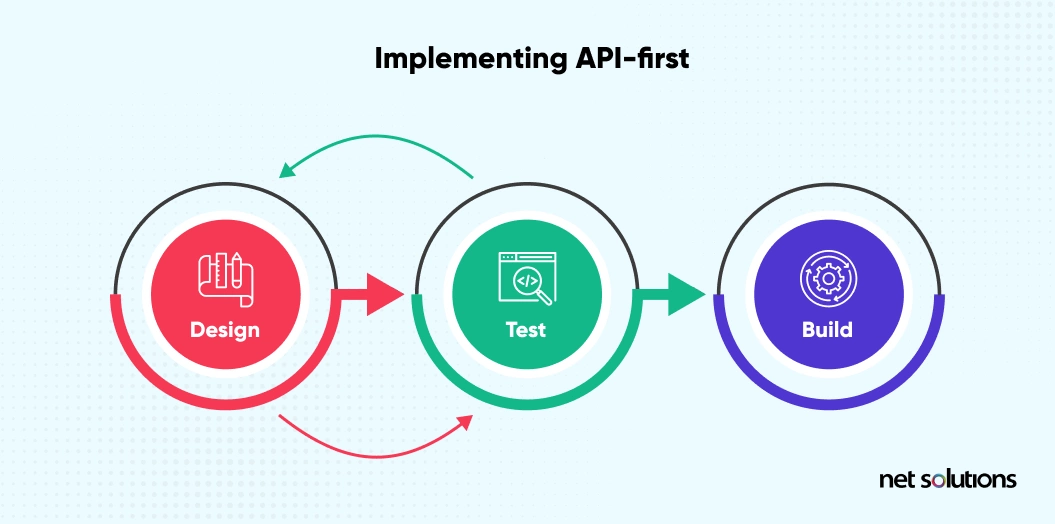
Defining API Specifications
Three commonly used API specifications (or specification languages) guide how the API will behave and link with other APIs.
- OpenAPI – Formally known as the Swagger specification, OpenAPI is the most commonly used API specification for web-based RESTful web services. OpenAPI is language-agnostic, making it very flexible with excellent documentation.
- RAML – Can be used when language support is not crucial, focusing on ease of development with excellent support for code reuse.
- API Blueprint – Also designed for the web, the syntax is easy to understand and has a growing fan base.
Designing API Interfaces
Thoughtful design and documentation go a long way to making APIs usable and meeting business objectives. Get feedback here early from all stakeholders. Mock the API to visualize behavior.
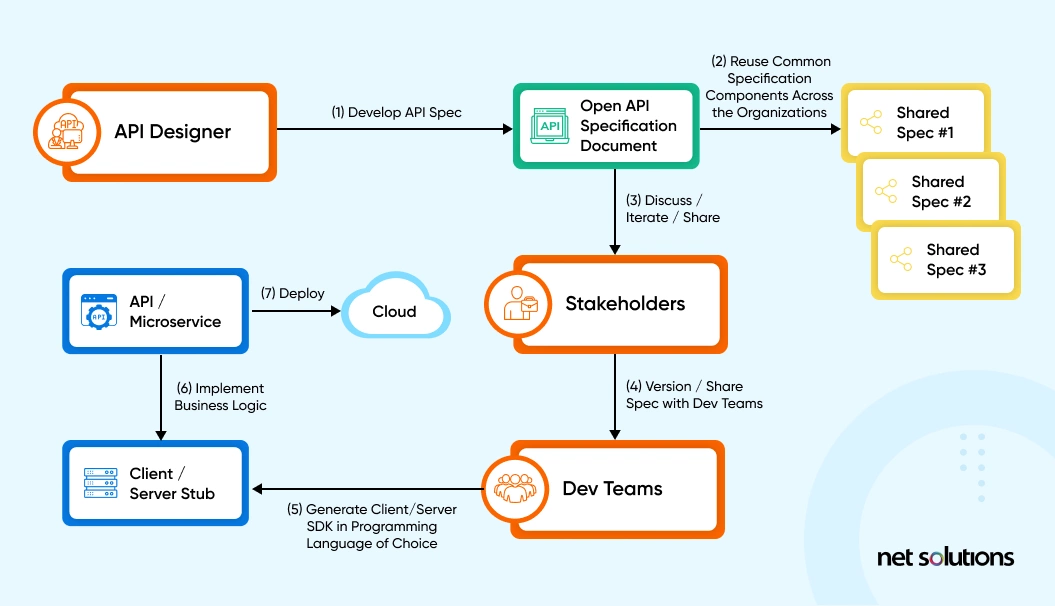
Implementing API Security Measures
Incorporating security and governance rules into the API design phase helps improve overall security. API security should be included in the design phase and implemented early on. You can find some great tips on API security here.
Building and Testing APIs
With clear design and documentation in the API contract, you can leverage parallel development to build the API, write tests, and develop the backend and the user interface (front-end). Once deployed to a staging server, the API can be tested.
Deploying and Managing APIs
Once it passes testing, the API can go to production along with all documentation.
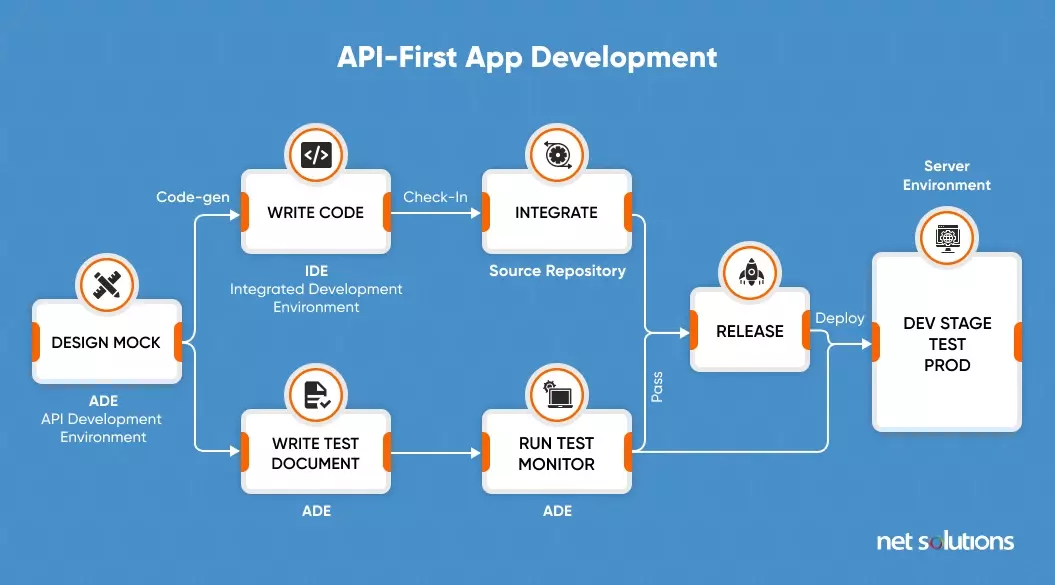
Monitor Performance
Get feedback regularly through a variety of methods, both quantitative and qualitative.
This article has outlined what API-First development is for product development and the advantages and challenges of its use. Moving forward, more organizations will be shifting to this mindset to create products that are more resilient to change.
Today, more API design skills are needed. If your organization wants to re-architect or create a product with API-First transformation in mind, reach out to see how we can help get you started on the best foot forward.
Frequently Asked Questions
1. Is API-First still relevant?
Yes, API-First still is central to architecting and re-architecting modern products, although new models are being explored around “data-first” or “consumer-first” design.
2. Why adopt an API-First model?
The API-First model supports MACH and composable architecture. It is excellent to support omnichannel retailing and any product or business that favors agility, flexibility, or future-proofing.
3. What are the 5 principles of API-First development?
- The API is a product that will be consumed
- The API design happens first, not retroactively
- Team collaboration is a must
- API-First supports modular / microservices
- The API contract dictates how the API will behave
4. What are the top stages of an API lifecycle?
The API lifecycle is create – control – consume. The first phase is design, build, and document; the second is security policies; and the third is API publishing.


